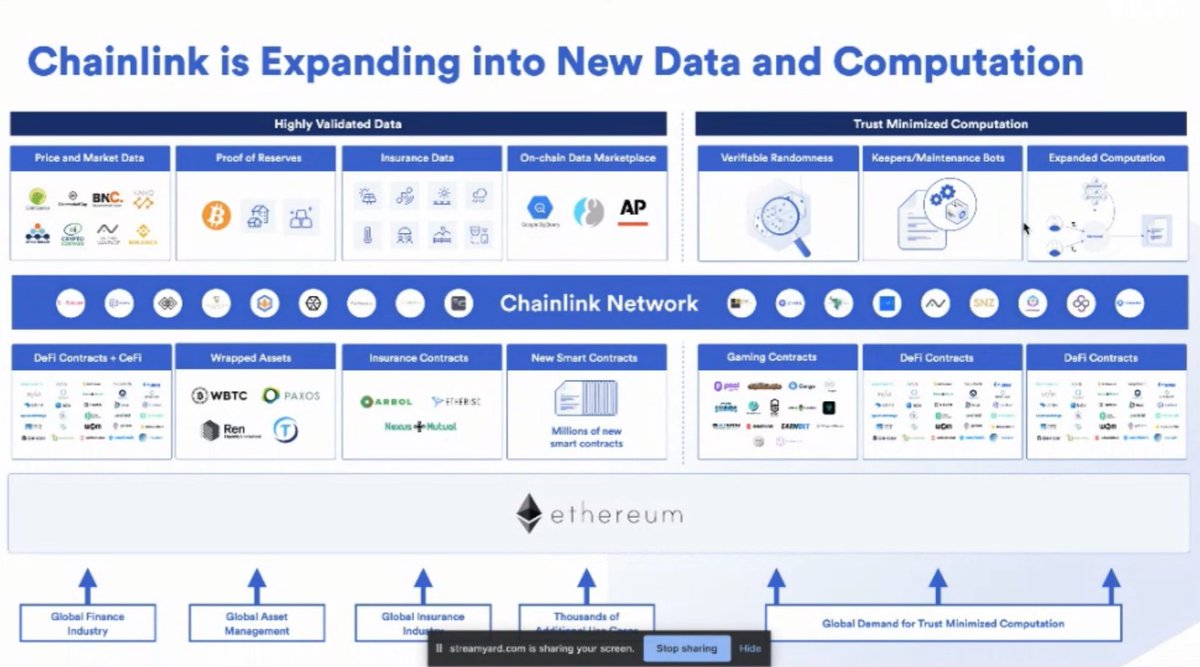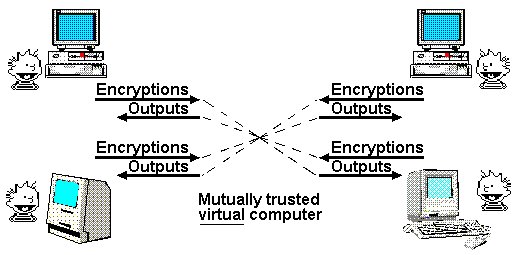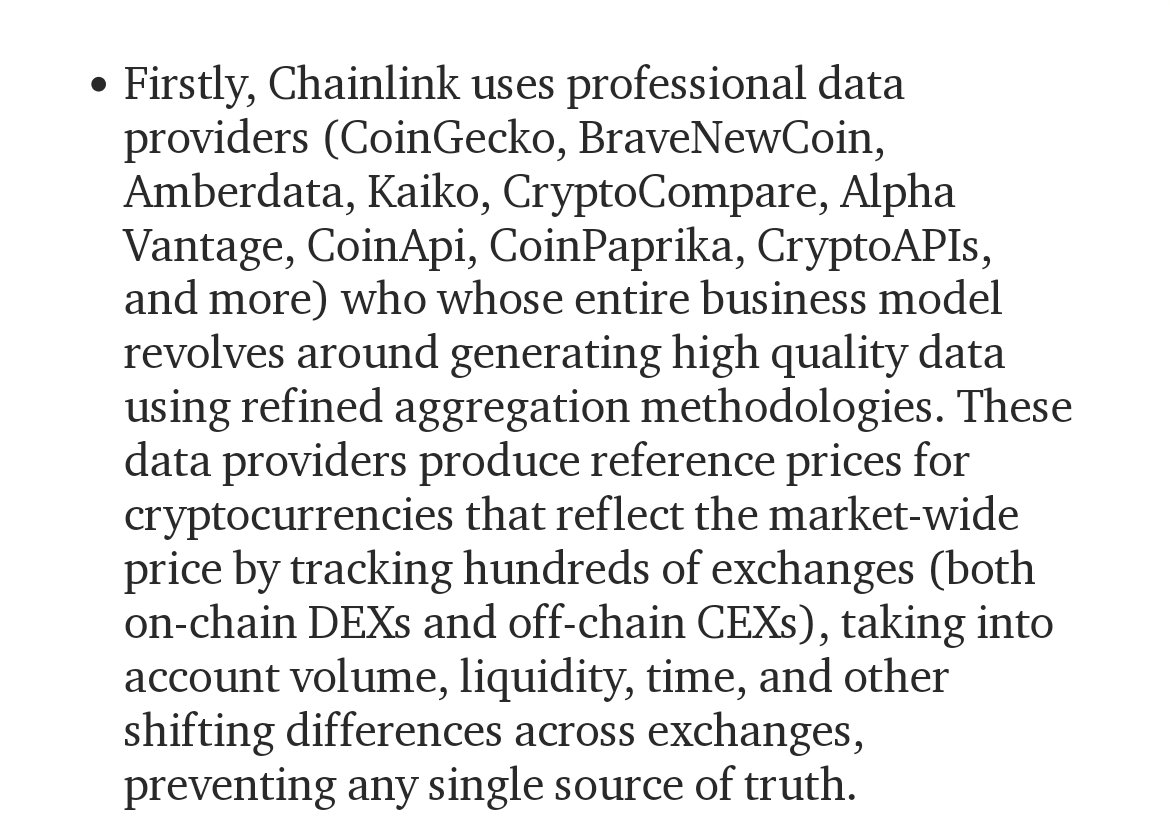
The new $LINK vault on @iearnfinance is a very welcome addition
Currently generates 70% APY
Zero impermanent loss risk
Lowers slippage of large LINK trades
Uses Chainlink oracles (Synthetix)
DeFi composability sandwich
A thread to learn more 👇
Currently generates 70% APY
Zero impermanent loss risk
Lowers slippage of large LINK trades
Uses Chainlink oracles (Synthetix)
DeFi composability sandwich
A thread to learn more 👇
https://twitter.com/iearnfinance/status/1369006484483411970
TL;DR
Deposit $LINK and/or $sLINK into the @CurveFinance LINK pool (curve.fi/link/deposit)
(sLINK is a token from @synthetix_io whose value tracks the price of LINK using Chainlink oracles)
You'll receive linkCRV as a tokenized claim on your deposit (like a receipt)

Deposit $LINK and/or $sLINK into the @CurveFinance LINK pool (curve.fi/link/deposit)
(sLINK is a token from @synthetix_io whose value tracks the price of LINK using Chainlink oracles)
You'll receive linkCRV as a tokenized claim on your deposit (like a receipt)


You then deposit those linkCRV tokens into the @iearnfinance crvLINK vault (yearn.finance/vaults) and receive yvlinkCRV tokens
Those are all the steps you need to take! The vault will do the rest
Wait a period of time and withdraw with more than you deposited
Those are all the steps you need to take! The vault will do the rest
Wait a period of time and withdraw with more than you deposited

But how does this all work? Let's start with the most common question "where does the yield come from?"
Short answer -> speculators
Long answer (this thread) -> The yield can be broken down into two categories: trading fees and token subsidies
Short answer -> speculators
Long answer (this thread) -> The yield can be broken down into two categories: trading fees and token subsidies
Trading fees:
Your LINK is in a liquidity pool that is (ideally) split 50% LINK and 50% sLINK
Every time a trader uses the pool's liquidity to swap from one token to another, there is a fee of 0.04%
50% of this (0.02%) goes to $CRV stakers and the other 50% (0.02%) goes to you
Your LINK is in a liquidity pool that is (ideally) split 50% LINK and 50% sLINK
Every time a trader uses the pool's liquidity to swap from one token to another, there is a fee of 0.04%
50% of this (0.02%) goes to $CRV stakers and the other 50% (0.02%) goes to you
Now you may be asking who tf is going to want to swap from LINK to sLINK or sLINK to LINK?
Nobody really, but that's where cross-asset swaps come into play
Any pools that contain a @synthetix_io synth token can be bridged together
resources.curve.fi/guides/cross-a…
Nobody really, but that's where cross-asset swaps come into play
Any pools that contain a @synthetix_io synth token can be bridged together
resources.curve.fi/guides/cross-a…
This enables extremely low slippage trades of $LINK against $ETH, $BTC, and a wide array of stablecoins like $USDT $USDC $DAI etc
For the context of this thread, you really don't need to understand how this part works
But know that this generate fees
For the context of this thread, you really don't need to understand how this part works
But know that this generate fees
https://twitter.com/bigmagicdao/status/1368837305759199232?s=19
A side bonus from this cross-asset swap liquidity pool design is that there's usually no impermanent loss, which happens when two assets in a pool diverge in price from one another
This makes it far less risky for liquidity providers, further lowering trade slippage
This makes it far less risky for liquidity providers, further lowering trade slippage
Token subsidies:
The other (majority) source of yield is from $CRV token subsidies given to liquidity providers
Essentially @CurveFinance pays users with $CRV tokens if they deposit their funds into their liquidity pools
You get more yield, they get more liquidity, win-win
The other (majority) source of yield is from $CRV token subsidies given to liquidity providers
Essentially @CurveFinance pays users with $CRV tokens if they deposit their funds into their liquidity pools
You get more yield, they get more liquidity, win-win
An interesting way Curve designed their $CRV token subsidy is that there a base yield which can be boosted up to 2.5x
You boost your yield by locking up $CRV for a predefined amount of time (up to four years)
A 23% APY base rate can be boosted up to 58% APY with full boost
You boost your yield by locking up $CRV for a predefined amount of time (up to four years)
A 23% APY base rate can be boosted up to 58% APY with full boost
Normally as a user there's friction, you need to buy and lock up $CRV to boost your rewards while the majority of your yield (token subsidy) is in $CRV and needs to be regularly sold to $LINK to realize your gains
This takes time and costs a lot of gas, impractical for most
This takes time and costs a lot of gas, impractical for most
What the @iearnfinance crvLINK vault does is abstract both of these away
You don't need to lock up $CRV to boost yield because Yearn does this for you with their $yveCRV vault
You don't need to manually sell your $CRV for $LINK, Yearn does this for you, compounding returns
You don't need to lock up $CRV to boost yield because Yearn does this for you with their $yveCRV vault
You don't need to manually sell your $CRV for $LINK, Yearn does this for you, compounding returns
Your $CRV yield will be regularly liquidated over time into $LINK, which is then deposited back into the Curve pool and then into the Vault
It uses an economy of scale to socialize gas costs so your yield will almost always be higher than doing it on your own
It uses an economy of scale to socialize gas costs so your yield will almost always be higher than doing it on your own
For this service of yield automation, @iearnfinance (if the docs are up to date) is a 2/20 structure with a 2% a year management fee and 20% of the profits
Your yield should definitely be above 2% APY and the 20% of profits is worth it for the auto reinvestment of yield
Your yield should definitely be above 2% APY and the 20% of profits is worth it for the auto reinvestment of yield
This all being said, it doesn't come without risks
The Curve LINK pool is currently imbalanced with about 75% in LINK and 25% in $sLINK
This means $sLINK deposits earn a rebate, but $LINK deposits incur a slippage penalty, sometimes as high as 1% of your deposit
The Curve LINK pool is currently imbalanced with about 75% in LINK and 25% in $sLINK
This means $sLINK deposits earn a rebate, but $LINK deposits incur a slippage penalty, sometimes as high as 1% of your deposit
If you deposit LINK and later withdraw LINK when the pool is the same weighting, you actually don't lose anything, this is a form of Impermanent loss, which again only occurs if the prices diverge
Currently 1 $LINK = 0.98 $sLINK on this pool
Currently 1 $LINK = 0.98 $sLINK on this pool
So my recommendation is either depositing $sLINK or an equal balance of $sLINK and $LINK to prevent this slippage
With the current yield, the slippage is probably worth it anyways but that's up to you to decide
With the current yield, the slippage is probably worth it anyways but that's up to you to decide
This process could be made even simpler with a wrapper contract which would allow you to just deposit $LINK one time, interacting the curve LINK pool and Yearn crvLINK vault for you
Just some potential UX and gas improvments for the future but not necessary by any means
Just some potential UX and gas improvments for the future but not necessary by any means
Thank you to @AndreCronjeTech and the @iearnfinance dev team for creating the $LINK Curve pool and the $crvLINK Vault
Even though [REDACTED] is getting all the yield attention atm, that's short lived, Yearn is the gold standard long term DeFi yield solution
Even though [REDACTED] is getting all the yield attention atm, that's short lived, Yearn is the gold standard long term DeFi yield solution
Good luck on your journey through DeFi my frens, avoid the rugpulls and any projects using centralized oracles
We're all gonna make it, might as well earn some yield in the meanwhile :)
We're all gonna make it, might as well earn some yield in the meanwhile :)
• • •
Missing some Tweet in this thread? You can try to
force a refresh












